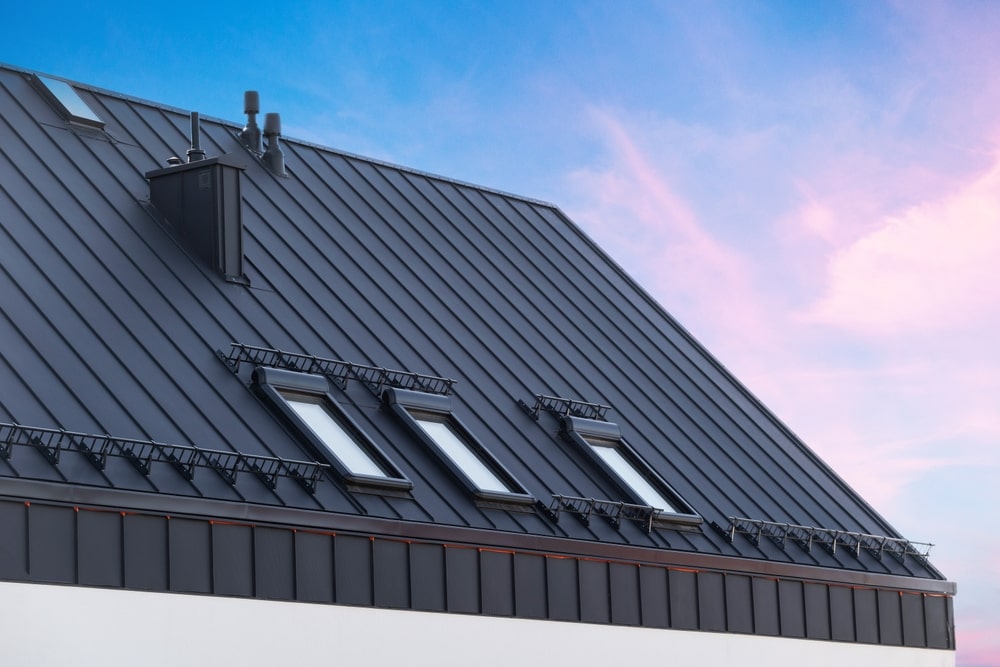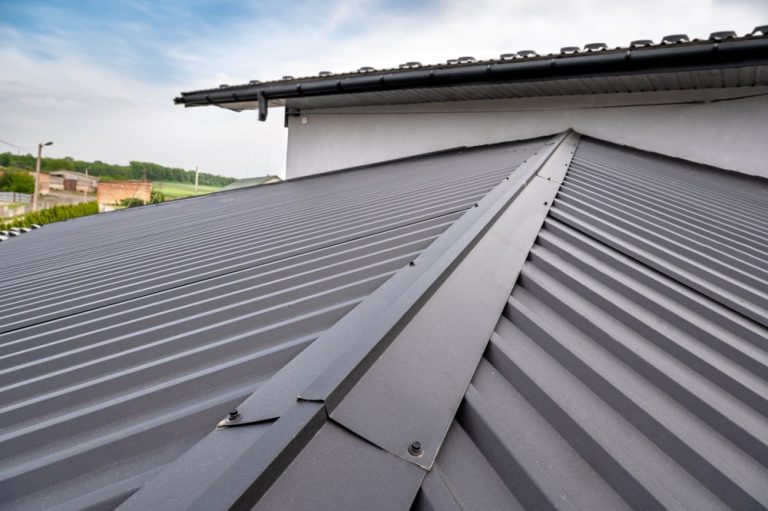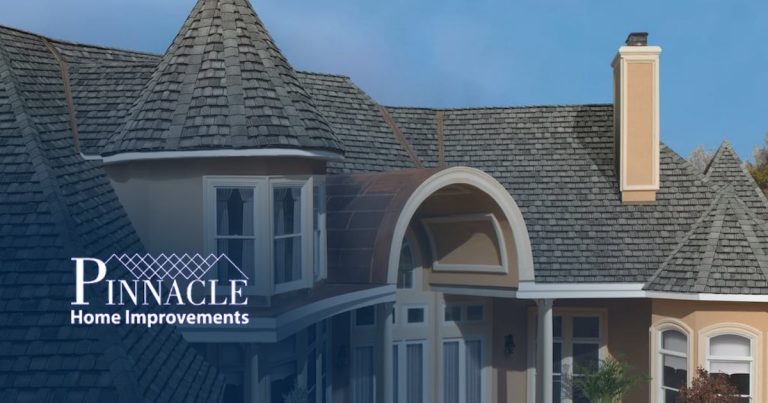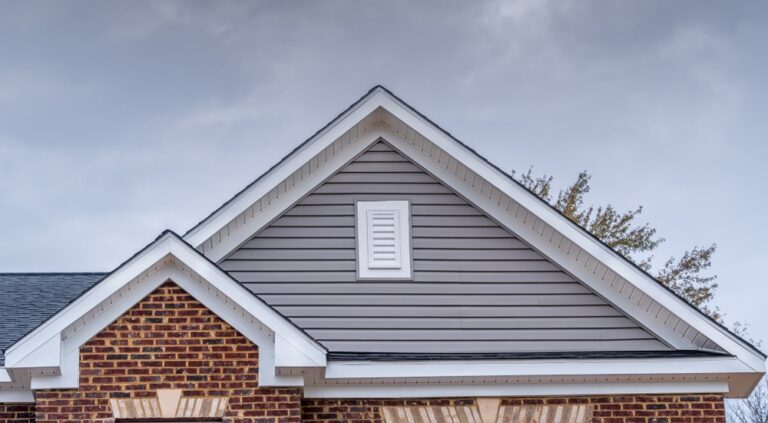Homeowners who need a roof replacement are increasingly turning to metal roof systems as they are a fantastic option that is eco-friendly, durable, and requires minimal maintenance. If you have an aged roof, you might want to consider a metal roof instead of asphalt shingles.
Shingles are a popular and affordable choice, though metal roofs will last for many more years, providing homeowners with more years of worry-free ownership. Their exceptional durability and energy efficiency make them a top contender for residential roof replacement over shingles as well as tiles, wood shakes, and other roofing materials.
Pinnacle Home Improvements is a top roofing contractor with a reputation for unparalleled craftsmanship and customer satisfaction. In this blog post, we delve into the average life expectancy of different types of metal roofs to help you make an informed decision for your new roof.
How Long Does a Metal Roof Last? Average Metal Roof Lifespan
While metal roofs last a long time, their longevity depends on the type of metal roof you choose.
Steel Roofs
Steel roofs can last anywhere from 40 to 60 years, making them a strong choice for your home. However, to prevent rusting, you’ll need to have a coating applied to protect them for the long haul.
Aluminum Roofs
Metal roofs made from aluminum typically last up to 50 years. This material is ideal for coastal areas as it can resist corrosion.
Copper Roofs
A copper roof lasts for a long time, with the potential to protect your home for 70 to 100 years or more. A copper roof will develop a unique green coating over the years, and while some homeowners find that charming, others may not.
Zinc Roofs
Zinc roofs can last over 100 years, making them another strong material choice for a metal roof.
Beyond the types of metals, you will also want to think about the types of metal roof systems. A screw-down metal roof may not last as long as you hope. Since the fasteners used are screws with rubber gaskets, a screw-down metal roof must be installed correctly. Properly installed metal roofs will provide a lengthy lifespan, but when shoddy work is done on a screw-down metal roof, you may get issues over the years.
If you want less worry, standing seam metal roofs are preferred. Standing seam metal roofs have a much longer lifespan because they are finished with high-quality paint to protect the metal panels. Standing seam metal roofs also have fasteners to connect the metal roof panels hidden underneath the roof. This protects them from the elements and is also easier to install correctly.
Factors Affecting How Long a Metal Roof Lasts
While metal roofs can outlast many other types of roofing materials and are easier to maintain than premium materials like slate, there are factors that affect their longevity.
Type of Metal Roof
Metal roof systems that are made from copper or zinc can last for over 100 years. Metal roofs made from steel and aluminum will have a shorter life expectancy, between 40 and 60 years.
Quality of Installation
A metal roof needs to be properly installed for a long lifespan. If you do not choose a reputable roofing contractor, shoddy workmanship can make even the best metal roof systems susceptible to damage through leaks, failing years before the end of their lifespan.
Metal Roof Maintenance
Although metal roofs are designed for longevity and are low maintenance, they still require inspections over the years. You should make sure to check for leaks, problems with the flashing and other features, and make any necessary repairs promptly to keep it in tip-top shape.
Climate and Metal Roofs
Metal roofs can handle harsh weather like a pro, though they can incur dings and dents from hail. Additionally, salt exposure in coastal locations can be an issue if you choose a type of metal that is prone to rust without getting a protective coating applied.
Metal Roof Design
Standing seam roofs allow for expansion and contraction with temperature changes. The metal panels of a standing seam metal roof are also secured underneath, and this design makes it last longer than a screw-down style of metal roof.
Should You Choose a Metal Roof?
Since there are many different types of roofing materials, it is important to consider the pros and cons of each material. Our Georgia home improvement contractors are happy to discuss metal roofs and your other options to help you make a confident decision in your roof replacement.
While metal roof longevity is a positive aspect, metal roofing lifespan is impacted by the type of metal chosen for the project. The durability of metal roofs also means considering a standing seam metal roof over screw-down options to have greater peace of mind.
Pros of Choosing Metal Roofs
Metal roofs, especially standing seam metal roofs, last a long time. They outlast asphalt roofs by at least 20 years. Metal roofs can withstand harsh weather, strong winds, and are fire-resistant.
Even better, metal roofs are energy efficient, allowing you to take greater control of your interior temperature. You’ll have a cooler, more comfortable home in the summer and retain warmth in the winter. If you’re concerned about the environment, metal roofs are ideal because they usually have recycled content and are also fully recyclable.
Most metal roofs can handle impacts from hail or falling branches, though it depends on the metal used for the roof. They have many benefits, which is why they are more commonly chosen for residential roofs.
Cons of Choosing Metal Roofs
Metal roofs also have a few downsides. The biggest issue to consider is the upfront cost. Metal roofs are much more expensive, especially when choosing a standing seam metal roof over shingle roofs. However, the key thing to remember is that although the upfront cost is higher, there will be less money spent maintaining it. Additionally, since metal roofs last longer, you won’t need to make another replacement in your lifetime.
Another thing to know about metal roofs is that they can be noisy, but only if you do not properly insulate them. Some people find the sound of rain drumming on their metal roof to be soothing, while others find it annoying. If you’re not sure whether or not the sounds will bother you, you can mitigate this issue with insulation and various coatings.
Metal roofs expand and contract as temperatures change, which makes having proper installation essential. You will also want to have it maintained through the years to ensure that the fasteners haven’t loosened. By doing so, you’ll prevent problems with your metal roof.
Installation and Maintenance of Metal Roof Systems
When you choose a standing seam metal roof, installation and maintenance are huge factors to keep in mind.
Professional Installation Is Crucial
In order to get the full life expectancy of your roof, you must have it installed correctly. Choosing a company that has a strong track record for successful installations will help because they will know how to protect the structural integrity of your roof. Metal roof panels must be installed to allow for expansion and contraction as temperatures vary through the seasons.
Expert roofing installers will also make sure the seams are sealed correctly and flashing is installed properly to keep the water out. The ventilation of the roof is another factor, as this prevents moisture buildup and other issues that can impact the lifespan of the roof. It makes sense to hire a roofing contractor who has built a reputation of excellence and knows how to follow building codes for compliance in the local area.
Regular Maintenance to Protect Your Metal Roof
If you want your metal roof to stay durable, you should always have inspections conducted to stay ahead of potential problems. Ignoring your roof will only lead to more costly repairs that could have been avoided with an annual inspection.
You should also clean your roof regularly when you notice debris. While protective coatings help, branches and leaves can trap moisture, which may cause it to corrode or rust. Another overlooked area on any roof is the gutter system, something that should be cleaned seasonally.
When gutters become clogged with leaves, twigs, and other debris, water can’t flow away from the home. Instead, it will pool on the roof, which can cause water damage. You can protect your metal roof by trimming overhanging branches, helping to solve issues with your gutters.
Don’t skip out on protective coatings for your metal roof. They can be reapplied every several years and are best for homes in coastal areas. A metal roof will have higher costs associated with it upfront, but the benefit is that, over the years, it will endure much more with less maintenance required. If you plan to spend many years in your home, it’s worth the investment to upgrade ventilation systems or choose higher-quality materials and sealants for your ultimate peace of mind.















